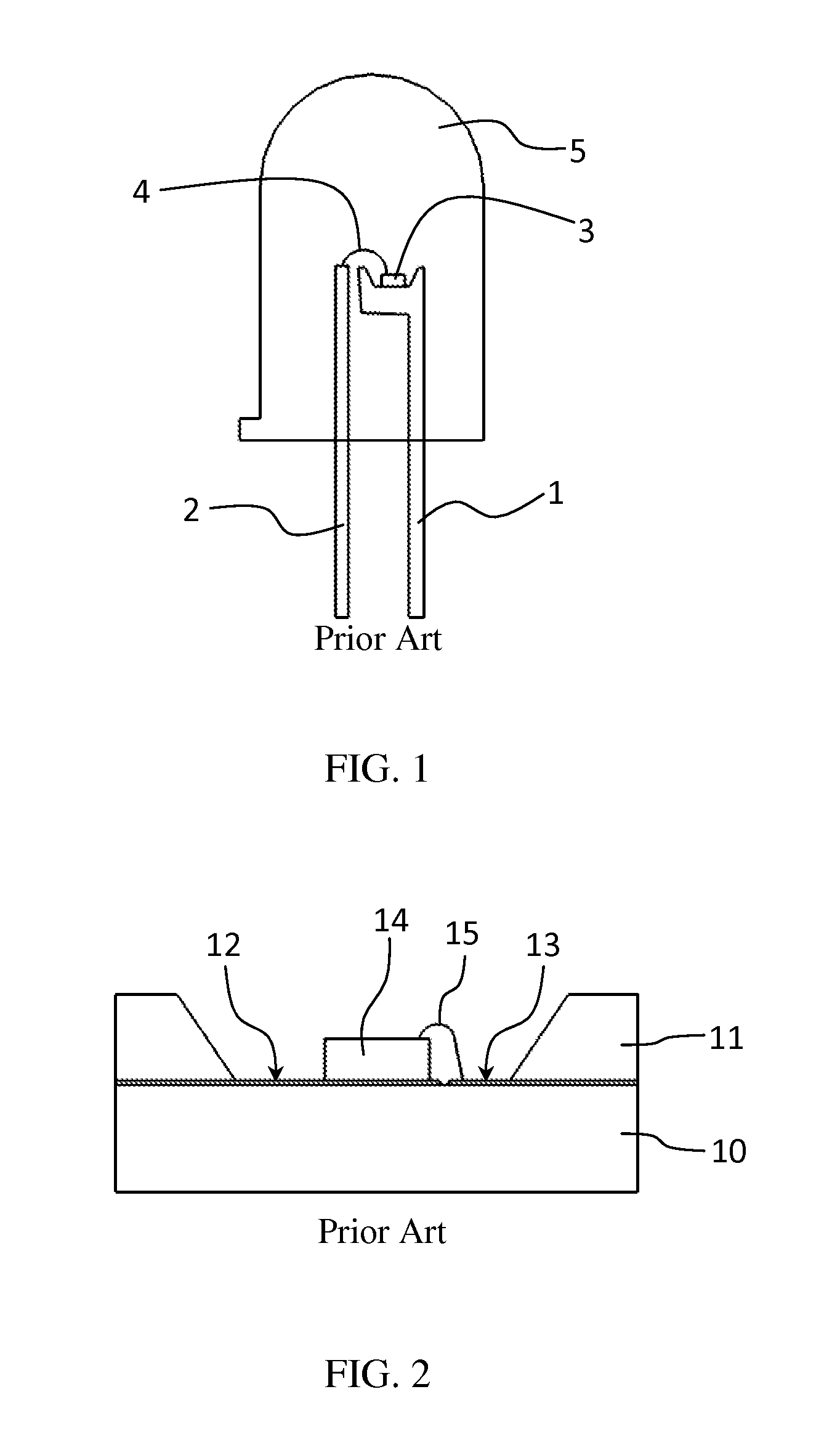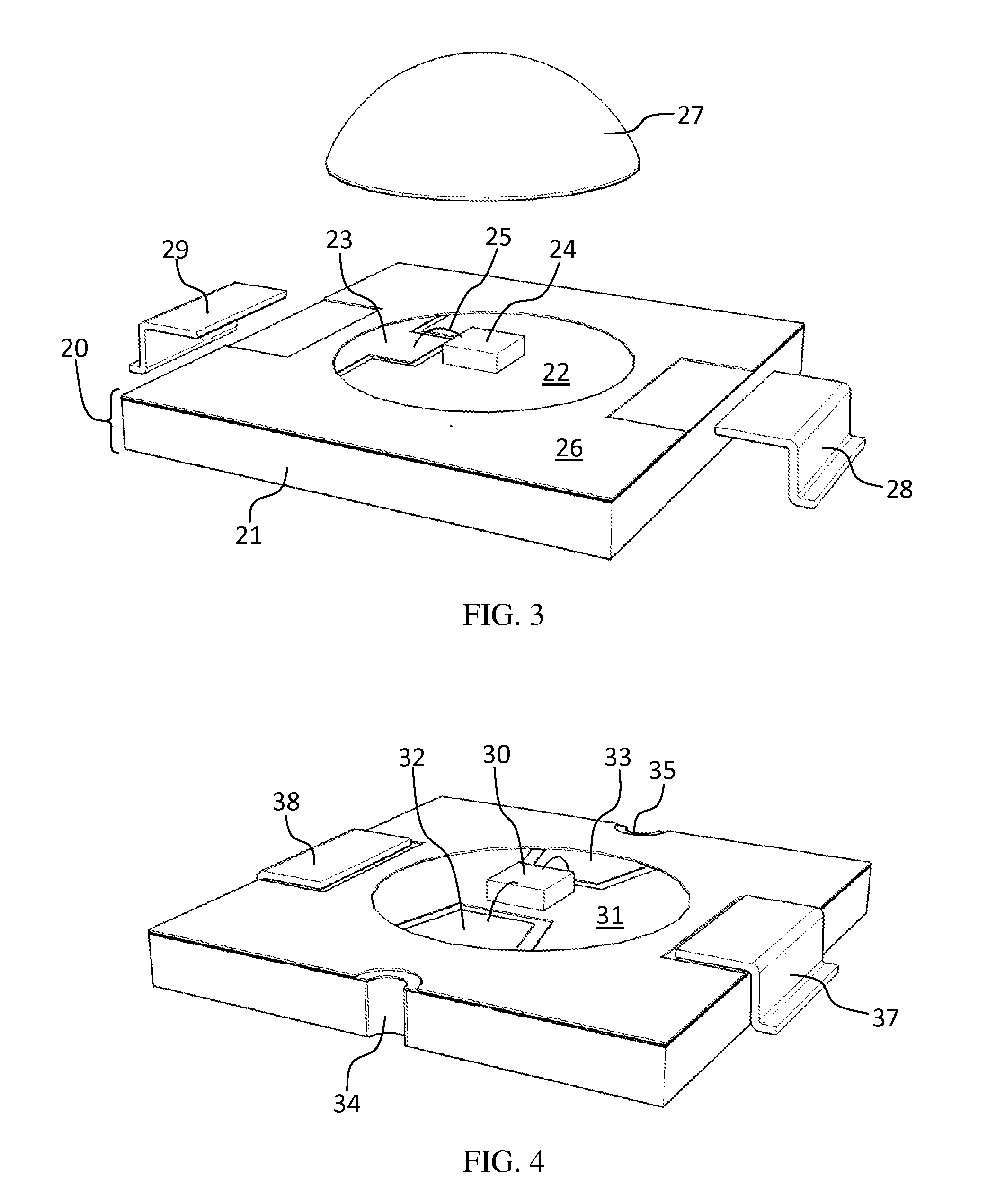Light Emitting Chip Package With Metal Leads For Enhanced Heat Dissipation
- Summary
- Abstract
- Description
- Claims
- Application Information
AI Technical Summary
Benefits of technology
Problems solved by technology
Method used
Image
Examples
Example
DETAILED DESCRIPTION OF THE DRAWINGS
[0012]The present invention is described in one or more embodiments in the following description with reference to the Figures. It is to be understood that other embodiments would be evident based on the present disclosure, and that modifications and adaptations may be made without departing from the scope of the present invention. All matters shown in the accompanying drawings are to be interpreted in an illustrative and non-limiting sense.
[0013]FIG. 3 is a perspective view of a light emitting chip assembly in accordance with the present invention. A substrate 20 includes a dielectric body 21, a chip-mounting area 22, a wire bonding area 23, and a solder mask layer 26. The chip mounting area 22 and the wire bonding area 23 are predetermined conductive patterns that are preferably made of copper (Cu). A laminate substrate, such as printed circuit board, or a ceramic substrate supports copper metallization and may be used as a substrate material. U...
PUM
 Login to View More
Login to View More Abstract
Description
Claims
Application Information
 Login to View More
Login to View More - R&D
- Intellectual Property
- Life Sciences
- Materials
- Tech Scout
- Unparalleled Data Quality
- Higher Quality Content
- 60% Fewer Hallucinations
Browse by: Latest US Patents, China's latest patents, Technical Efficacy Thesaurus, Application Domain, Technology Topic, Popular Technical Reports.
© 2025 PatSnap. All rights reserved.Legal|Privacy policy|Modern Slavery Act Transparency Statement|Sitemap|About US| Contact US: help@patsnap.com



